Top 10 Best ️Remote Control Desktop Software | software
We offer the best remote desktop software to make it easier to control and access PCs and deploy software remotely. If you're looking for more tools, be sure to check out our guides to the best video conferencing software and best online collaboration tools around. Also, take a look at our in-depth article on everything you need to set up your home office.
Choosing the best remote desktop software will give you the tools to access and manage one or more computers from another device. Remote access is possible via local networks and the Internet, which means that with the right software, anyone can access any device, anywhere in the world.
With one of the remote desktop access apps we've listed below, you'll be able to do one of many things.
For example, you can use your personal smartphone to access and manage files on your work PC or office laptop without having to leave home. Having that versatility is great, especially during times of illness or hardship when you can't physically get to the office like you are now.
It's no wonder that searches related to remote desktops have increased dramatically over the past few months as companies scramble to learn more about remote access.
Using the remote access software is simple. Setting them up usually takes no more than a few minutes, and you'll usually need to install the software on the computer or other device with which you want to access the remote computer. Many programs also need to be installed on the remote PC, while others are connected via web link or passcode.
Some versions of Windows come with built-in remote desktop software, but third-party tools often work much better and offer a lot more functionality. This can be especially important if you plan to use the software regularly.
There are a few other popular uses for the best remote desktop software. For example, you can handle complicated tasks from a laptop by connecting remotely to a more powerful computer. Additionally, IT support personnel routinely use remote access programs to control a customer's computer and troubleshoot any issues.
In this article, we've briefly covered our ten best remote desktop apps to help you choose the right one for your needs.
1/ RemotePC
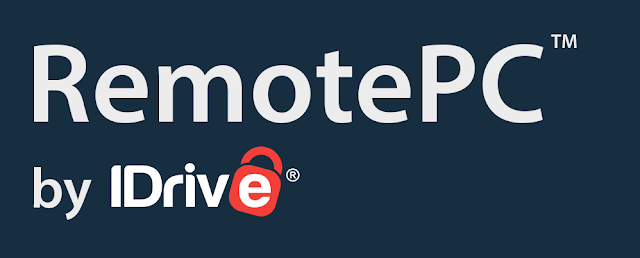 |
| RemotePC |
RemotePC is a remote access and control software application developed and owned by IDrive Inc., a software company based in Calabasas, California, USA. Its main function is to allow remote access and maintenance of computers and other devices. The first version of the software was released in early 2017.
RemotePC software was created by the team at IDrive Inc., a private technology company based in Calabasas, California. The application has been specially developed for communication and remote control functions, including text chat, voice, RemotePC meeting, interactive annotation, etc.
Remote PC software has been discussed and cited in technology journals and by several industry outlets such as Software Advice, Capterra, GetApp (a subsidiary of Gartner), TechRadar, and PCMag, among others. The use of the app accelerated in 2020 and 2021 as demand for remote working, learning.
2/ Zoho Assist
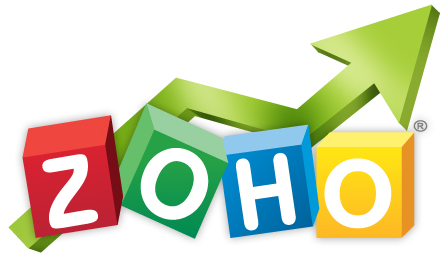 |
| Zoho Assist |
Zoho Assist is a cloud-based remote access and support software that helps you support customers remotely through web-based, on-demand remote support sessions. Set up unattended remote access and effortlessly manage remote PCs, laptops, mobile devices, and servers.
Zoho Assist, the remote PC access software, lets you configure a PC for remote access and enjoy round-the-clock access. You can remotely access the computer from Mac, Linux, Windows, iOS, or Android devices.
Zoho Assist offers the same kind of online security features used in banking and payments, including 256-bit SSL and AES encryption. Other features, including idle session timeout and two-factor authentication, help protect remote computers from tampering.
Zoho Assist, an unattended remote access software, allows you to perform native system diagnostic operations, using task manager, opening a command prompt and analyzing the status of groups, hardware, printers, services, software, and users associated with each computer.
3/ Splashtop
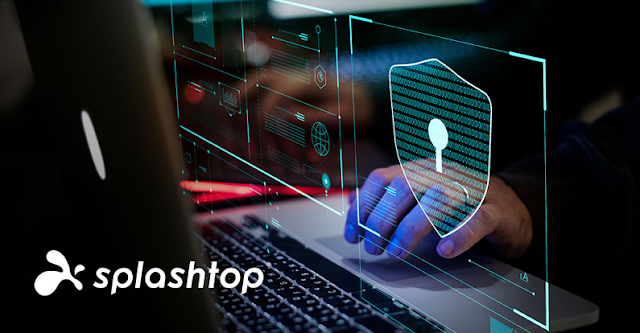 |
| Splashtop |
Splashtop is a family of remote desktop software and remote assistance software, developed by Splashtop Inc. Splashtop allows users to remotely access or support computers remotely from desktop devices and mobiles. Splashtop enables remote computing access for businesses, IT support and help desks, MSPs, and educational institutions.
Splashtop remote desktop apps map the mobile device screen to the remote computer screen, so users can interact with the remote computer. For desktop computers, the keyboard and mouse on the client computer will control the same functions on the server computer.
When a mobile device controls a desktop computer, Splashtop uses touch controls and zooms using the pinch gesture. Gestures are used to replace mouse and keyboard controls. For example, a two-finger swipe gesture is used to scroll windows, usually mapped to the mouse wheel controller. Splashtop uses a modified version of the mobile keyboard that includes special keys, such as Ctrl, Alt, or Del.
4/ Parallels Access
 |
| Parallels Access |
The fastest, easiest, and most reliable remote access to your computer from anywhere. Access all your apps, files, and computers in one place.
One tap on your mobile device and you're reliably connected to your computer. Or access it from any other computer via a browser and your secure Parallels account. Easily navigate your hard drive to find a file or photo, then copy or open it with just a tap.
The unique Application technology lets you use all your desktop apps as if they were native apps for your iPhone, iPad, or Android device. And the Lock'n'Go Magnifier is a marvel: Select, copy and paste text with precision. Pressing a small button on the desktop or dragging an image with a natural one-finger lock is a breeze.
Manage and access all your files in the cloud, on remote computers, and on local devices with Parallels Access Universal File Manager. Copy and paste to your mobile device or open cloud files on a remote desktop with just one click.
5/ LogMeIn Pro
 |
| LogMeIn Pro |
Remote access made easy with the most trusted remote desktop software for small and medium businesses, LogMeIn keeps you and your team productive from anywhere with a simple, intuitive interface.
- Access any machine in seconds from desktop and mobile apps
- Add an unlimited number of users to extend remote access to your entire company
- Work faster and easier with a streamlined and responsive toolset
- Plus, manage every password with a free LastPass license
6/ Connectwise Control
 |
| Connectwise Control |
ConnectWise Control is a self-hosted remote desktop software application owned by Connectwise Inc., a software developer based in Tampa, Florida, USA. It was originally developed by Elsinore Technologies in 2008 as ScreenConnect.
The product is a self-hosted server application that allows the primary user to host the software on their own servers, PCs, virtual machines (VM), or a virtual private server (VPS). Once installed, the central web application can be made visible inside and outside the local area network (LAN). ConnectWise Control has a proprietary protocol and exposes an open architecture framework that can be used by users to implement custom plugins, scripts, or various integrations.
A generic usage model would start with a host initiating a session through the central web application.
A participant would then join a session by clicking an email link or through the app's guest page. A standalone client can be created and deployed to a targeted machine without human intervention. The executable is ScreenConnect.ClientService.exe (x86) on Windows operating systems and is signed by a COMODO RSA code signing CA certificate.
The most commonly expected features for a product in this area are present. Examples include reboot and reconnect, drag and drop file transfer, screen recording, safe mode support, multiple monitors, command-line access, wake on LAN, VoIP, chat, and a custom toolkit for rapid deployment of support tools.
In addition to features that facilitate communication, ConnectWise Control also offers complete control over branding and customization of product design, logo, color scheme, icons, text strings, and location.
The software is self-hosted, giving users the ability to control data flow behind their own firewall and security implementations. ConnectWise Control uses 256-bit AES encryption to aggregate and ship data supports two-factor authentication, has server-level video auditing, and granular role-based security. Forms-based authentication and Windows authentication are optional authentication methods for security purposes.
Host (presenter or technician): can use Mac, Linux, Windows, iOS, or Android operating systems. Guest (customer or participant): can connect from Mac, Linux, or Windows. ConnectWise Control can also be used to remotely support Android devices, with full view and control available for devices made by Samsung.
7/ TeamViewer
 |
| TeamViewer |
TeamViewer is computer software for remote access and control, allowing the maintenance of computers and other devices. It was first released in 2005 and its functionality has expanded step by step. TeamViewer is proprietary software, but does not require registration and is free for non-commercial use. It has been installed on more than two billion devices. TeamViewer is the flagship product of developer TeamViewer AG.
TeamViewer is available for all desktop computers with popular operating systems, including Microsoft Windows and Windows Server, as well as Apple's macOS. There are also packages for several Linux distributions and derivatives, for example, Debian, Ubuntu, Red Hat, and Fedora Linux. Additionally, there is Raspberry Pi OS, a Debian variant for the Raspberry Pi.
TeamViewer is also available for smartphones and tablets running Apple's Android or iOS/iPadOS operating system, with very limited functionality on Linux-based operating systems. Support for Windows Phone and Windows Mobile was dropped after Microsoft stopped supporting both operating systems.
TeamViewer functionality differs by device and software variant or version. The heart of TeamViewer is the remote access to computers and other endpoints as well as their control and maintenance. Once the connection is established, the remote screen is visible to the user at the other endpoint. Both endpoints can send and receive files as well as access a shared clipboard, for example. In addition, certain functions facilitate team collaboration, such as audio and video transmissions via IP telephony.
In recent years, the functionality of the software has been optimized especially for use in large companies. For this purpose, the corporate variant TeamViewer Tensor was developed. With TeamViewer Pilot, TeamViewer sells remote assistance software with augmented reality elements. TeamViewer offers interfaces to other applications and services, for example, Microsoft (Teams), Salesforce, and ServiceNow. The solution is available in almost all countries and supports more than 30 languages.
8/ Chrome Remote Desktop
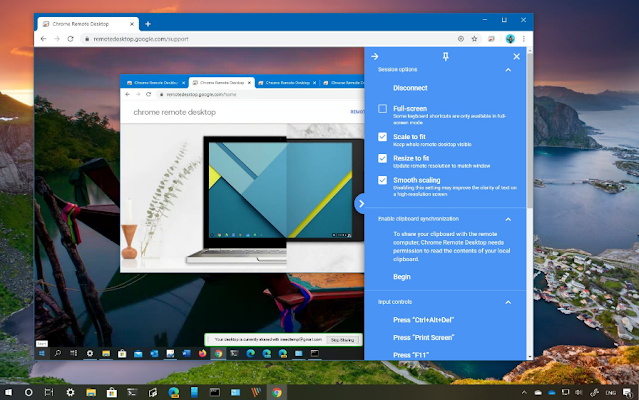 |
| Chrome Remote Desktop |
Chrome Remote Desktop is a remote desktop software tool developed by Google that allows a user to remotely control another computer through a proprietary protocol developed by Google informally called "Chromoting". It transmits keyboard and mouse events from one computer to another, relaying graphics display updates in the other direction, over a network. This functionality, therefore, consists of a server component for the host computer and a client component on the computer accessing the remote computer.
The Chrome Remote Desktop client was originally a Chrome extension from the Chrome Web Store that required Google Chrome. the extension is deprecated and a web "portal" is available at remotedesktop.google.com. The browser must support WebRTC and other unspecified "modern web platform features". The client software is also available on Android and iOS.
If the computer is to host remote access, for example for remote assistance, a server package is downloaded. A Chromium-based browser supporting Chromium extensions such as Google Chrome or Microsoft Edge must be used. This is available for Microsoft Windows, OS X, Linux, and Chrome OS.
Chrome Remote Desktop provides a persistent, pre-authorized connection to a remote computer, designed to allow a user to remotely connect to another of their own machines. In contrast, Remote Assistance is designed for short-duration remote connections and requires an operator on the remote computer to participate in authentication, since the connection to Remote Assistance is done through passwords. PIN passwords generated by the remote host human operator. This connection method will also periodically block control of the connecting user, requiring the person on the host machine to click a button to "Continue Sharing" with the connected client.
The protocol uses VP8 video encoding to display the remote computer's desktop to the user with high performance over low bandwidth connections. On Windows, it also supports copy-paste and real-time audio streaming, but it lacks an option to disable audio streaming sharing and forwarding. The software is limited to 100 clients. Attempting to add more PCs after reaching 100 will result in a "Failed to register computer" error.
9/ Remote Desktop Manager
 |
| Remote Desktop Manager |
RDCMan manages multiple remote desktop connections. It is useful for managing server labs where you need regular access to each machine, such as automated check-in systems and data centers. You can connect or disconnect all servers in a group with a single command.
Remote Desktop Manager for iOS is a free tool that provides access to all your logins and passwords remotely.
10/ Remote Utilities for Windows
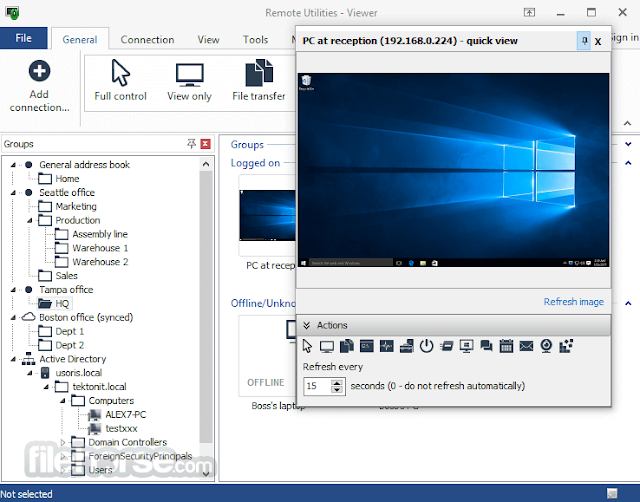 |
| Remote Utilities for Windows |
Remote Utilities is remote desktop software that you can use to manage your organization's computers located in different locations around the world. It achieves this by taking advantage of a fluid network that allows easy access between the controlling computer and end-user remote systems.
Remote Utilities is a must-have software solution, especially in the post-pandemic business world that prioritizes the need for remote working. Besides viewing the remote desktop, with Remote Utilities you can:
- Send typing commands.
- Control the mouse pointer remotely.
- Transfer files between terminals.
- Shut down and restart the remote computer if necessary.
- Chat with an end-user.
- Edit the remote Windows registry and manage processes and tasks.
- Provide on-demand remote support to end-users around the world.
- Manage headless or unattended workstations and servers.
- Use the built-in MSI configurator to customize unattended or monitored access settings.
What is Remote Desktop Services (RDS)?
According to Vinod Jeyachandra, CTO of Anunta Tech, in Microsoft Windows, Remote Desktop Services is a platform that allows users to share desktop environments between one Windows computer and another over the Internet. By setting up RDS on a Windows server and then using a Remote Desktop Protocol (RDP) application such as Microsoft Remote Desktop, you can connect from another computer to a hosted Windows environment via RDS.
Once you've logged into the RDS-hosted PC environment, you can generally access all of the same local resources - including storage, applications, the Windows desktop interface, and more. - which you could use if the RDS environment was a real PC. who was sitting in front of you? RDS can also be configured to only make certain applications available to remote users if administrators choose to configure it that way.
Typically, the machine that hosts RDS runs in the same physical location - such as the same office building - like the computers from which users access remote desktop environments. However, it is also possible to install RDS on a server running in the cloud and share workstations from the cloud.
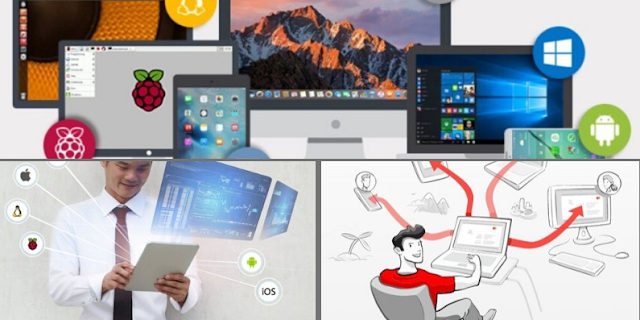






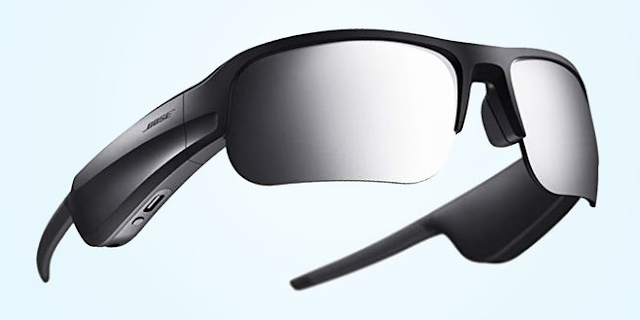



Comments
Post a Comment